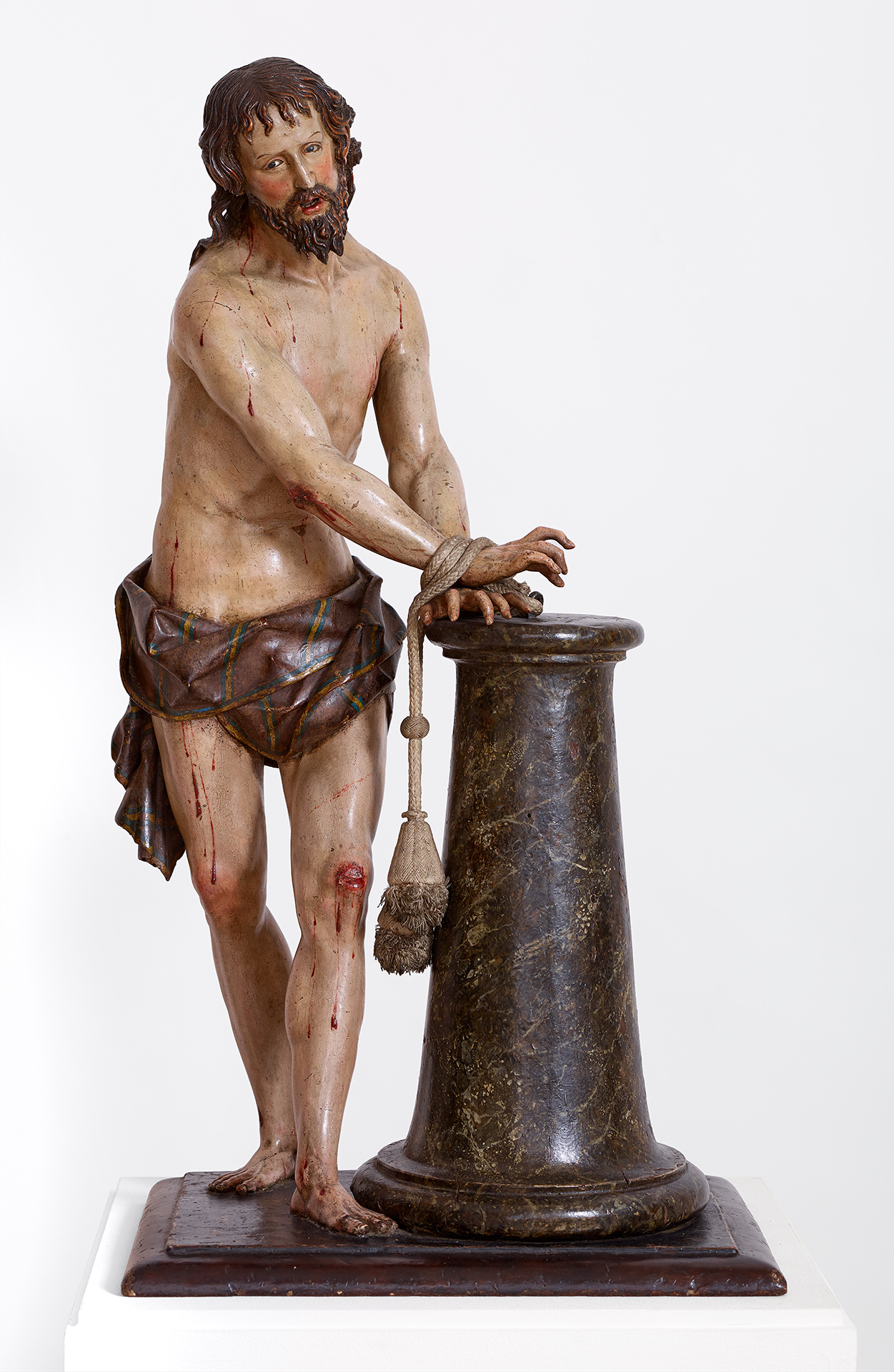
Gregorio Fernández (Sarria, Lugo, 1576 – Valladolid, 1636)
The Flagellation of Christ
circa 1616
WORK INFORMATION
Carved and polychromed wood, 74 x 39 x 31 cm
Gregorio Fernández was a highly inventive artist who left us ample proof of his originality and technical prowess. In 1606 he appeared in Valladolid as a member of Pompeo Leoni's circle and made that city his permanent home. He produced a number of monumental sculpture groups and processional images for Holy Week. Thanks to commissions from the nobility, municipal authorities and major religious orders, his influence spread rapidly throughout Castile, and his works made their way to almost every corner of Spain, Portugal and Peru. Philip IV acknowledged him as the best sculptor in his kingdoms. Many of his works are intensely realistic, rendering the appearance of truth utterly lifelike without overlooking the importance of beauty or the exaltation of the senses. Fernández's art perfectly embodied the postulates of the Counter-Reformation and, from an early date, laid the foundations of genuine Baroque sculpture.
None of the gospels specify exactly how Christ received the unjust flogging ordered by Pilate, but imagination made it necessary to incorporate a column to which Jesus was bound, devotion multiplied the number of lashes applied to the Saviour's chest and back, and reminders of the cruel executioners' presence were frequently included.
The confraternities of flagellants who paraded through the streets during Holy Week accompanying the processional floats or pasos helped people to relive—blood and all—the tragedy that occurred at the Roman governor's house in Jerusalem. The wounds "they made to the sacred back of our Lord Jesus Christ with the multitude of lashes laid upon his majesty" were an object of veneration, and the Confraternity of the True Cross of Valladolid even requested indulgences and jubilees from Rome for those who underwent self-flagellation.
In this iconographic model of Christ at the Column invented by Fernández, Jesus is standing beside a low column shaped like a truncated cone, modelled on the one preserved since the 13th century in the Church of Santa Prassede in Rome. His pitiful state inspires the viewer's compassion and is deliberately designed to impress believers and convince the incredulous.
This piece by Fernández completes a long list of works on the same theme (Convent of El Sacramento, Madrid; Convent of La Inmaculada, Valladolid; Monastery of San José, Calahorra; Penitential Confraternity of the True Cross, Valladolid; Convent of Santa Teresa, Ávila), proof of its widespread success in Counter-Reformation circles. Its provenance is not known, but it may have originated with the Carmelites as this motif is frequently associated with that order. The smaller-than-life scale may indicate that it was intended for private worship in an oratory or cloistered community.
It must be considered a work of the first order, made by the master's own hand at his finest moment, combining the classicism of its form with the intensity of religious sentiment. The treatment of the nude figure, the expression of the head with its glass eyes, and the incredibly fine carving on the hair, beard and column are all characteristic of Fernández. The flesh tone enhances its lifelike appearance without exaggerating the bloodstains, and the polychrome on the loincloth is similar to that on Veronica's cloak in the processional group of the Way to Calvary (Museo Nacional de Escultura, Valladolid), a commission the sculptor received in 1614, and can be related to many other works in his repertoire, such as the cloth covering the nakedness of the thief Dismas (1616).
Of all his other Christ at the Column carvings, the one closest to this work in terms of style is now held at the Convent of La Encarnación in Madrid. The body in that piece is not arched like the others, and it has a similar sensual softness; it was probably made around 1616, the year in which the convent opened. [Jesús Urrea]

